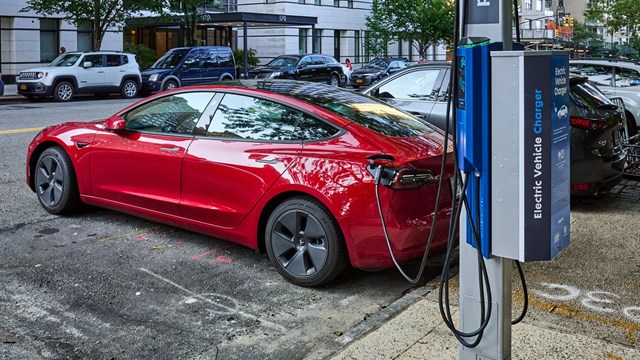President Joe Biden’s signing of the Inflation Reduction Act earlier this week has been heralded as the most far-reaching and comprehensive legislative plan to fight climate change to date. Among many other things, it provides millions of dollars for the production and acquisition of electric vehicles (EVs).
Of course, electric vehicles require electric vehicle charging stations. Unlike gas pumps, EV charging stations are generally found in garages, and those garages are generally found in private homes. However, as with so many things, New York City is different from the rest of the country. Given the distinct lack of private garages - especially in Manhattan and parts of Brooklyn - as EVs become more common, charging stations will be needed, and likely placed in multi-vehicle garages. How practical - or even feasible - is it for co-op and condo communities with garages on their properties to install charging stations?
Options & Factors to Consider
“There are a variety of factors to take into consideration when a building considers installing EV charging stations,” says Matt Resnick, director of project management for AKAM Management, based in New York. “They vary in size, cost, and construction needs. There are also three different levels of charging stations that provide different charging speeds. Level 1 is basic charging service and the slowest. Level 2, which charges more quickly than Level 1, is the most common charging unit used, and is being installed in condominium garages and public spaces. Level 3, the quickest charge via direct current, is more commonly seen at large charging facilities.”
As more people are driving electric vehicles, there is certainly more pressure on buildings to build out or reshape their infrastructure to support this higher demand. “The number of stations in a space can vary greatly,” says Resnick. “The issue many boards face is where to put the units. In addition to the number of existing parking spots, they also need to consider the ownership or leasing arrangement with the garage, and if there is enough power available on-site. Also, adding EV stations to a garage could require rearranging existing parking spaces, and certainly change the layout as well.”
Incentives
In addition to the incentives provided through the Inflation Reduction Act for car buyers, there are state sponsored incentives for installing EV charging units in garages. “New York has extensive state-wide subsidies, and continues to roll out more,” says Resnick, “providing incentives and discounts that benefit a building installing EV chargers. There are a number of programs that suit various needs. For example, at a building with a semi-private garage with some parking spaces available to the public, you can get charging stations installed at minimal cost. Private garages attached to buildings can get a majority of costs covered.”
Resnick explains that NYSERDA sponsors a Utility EV Make-Ready Program, which offers incentives that will offset a large amount of the necessary investment to those installing Level 2 chargers, and in some instances all of the infrastructure costs associated with preparing a site for EV. There are other agencies that have different rebate and tax credit programs that buildings can take advantage of as well, based on eligibility.
Generally, EV stations have either one or two ports to each unit, and each port can charge one vehicle. The units have customizable charging options that the owner or manager of the charging unit can set up. “Given the current and evolving incentives, the recommendation we give our clients is to install EV chargers based on future demand, which obviously is projected to increase. Your building may need four chargers today but should consider taking advantage of the discounts to get more now based on what infrastructure allows.”
Given the incentives available on both sides, co-op and condo building with their own garages should give serious consideration to installing EV charging units. Electric vehicles are clearly the future of personal transportation, so accommodations for powering them are likely to become the future ‘must-have’ amenity.










2 Comments
Leave a Comment